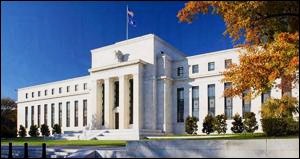By Pam Martens: May 13, 2015
There has been a seismic shift in thinking among global investors when it comes to sovereign debt and it’s not about what you’re reading in the business press.
In the past three weeks, yields have spiked on sovereign debt which has caused an estimated loss of over $400 billion globally – and counting. (Bond prices move inversely to interest rates.) This has effectively been a rapid, unanticipated tightening of monetary policy by the markets themselves – leaving central banks in Europe, China and Japan, which are trying to effectuate an easing of rates, nervously fingering their worry beads.
The business media has attributed the spike in rates to everything from the rise in oil prices refocusing attention on the potential for inflation, rather than deflation, to the unwinding of crowded trades as investors prepare for a Fed rate hike. Those factors may be at play to some degree, but the real worry here is one of supply and demand – now and going forward.
Yesterday’s 3-year Treasury note auction gives you a hint of what can happen. Yesterday was the first leg of a $64 billion Treasury note and bond auction this week: $24 billion on Tuesday in 3-year notes; another $24 billion today in 10-year notes; and $16 billion tomorrow in 30-year bonds.
In the face of those supply headwinds, the 10-year yield whipsawed yesterday from an opening yield of 2.28 to a high of 2.36 before closing at 2.25 percent. The spike in the 10-year yield sent shockwaves through the stock market – whose dividend yield competes with bond yields – sending stocks down 172 points before closing at a more modest loss of 36.94 points as Treasury prices recovered and yields declined.
What most American citizens don’t know is that in the U.S., global banks that are designated as primary dealers are contractually required to participate in all Treasury auctions. According to the Government Accountability Office (GAO), the primary dealers “buy the largest share of Treasury securities at auction.”
There are currently 22 primary dealers, global banks like Citigroup, JPMorgan, Goldman Sachs, Morgan Stanley, UBS and Deutsche Bank that also make big bets globally on sovereign debt. When banks have to bid in a $64 billion auction in the U.S., they tend to lighten their exposure to notes and bonds elsewhere.
But there is more on the minds of global bond investors than big quarterly Treasury refundings in the U.S. There is a growing concern that the extreme levels of wealth and income inequality here and abroad are creating a permanent, rather than temporary, rate of tepid economic growth worldwide. This translates into a future where governments are forced to issue ever more debt to plow into fiscal spending to prevent their economies from lapsing into deflation and, potentially, a depression.
Markets trade on anticipation of where economic data will stand three to six months down the road. The big selloff in sovereign debt is telling us that global investors see major economies mired in the hangover of the 2008 crash indefinitely with deficit spending on infrastructure soon to replace Quantitative Easing (QE) as the new monetary tool to ward off deflation.
To think about this from another angle, recall what happened in the period from early November 2010 to mid December 2010 after the Federal Reserve announced QE2, its plan to buy $600 billion of longer term Treasuries. Because the Fed was going to be shrinking the supply by $600 billion, the market reaction should have been to drive yields down. Instead, from early November to mid December 2010, the yield on the 10-year Treasury spiked from 2.50 to 3.50 percent.
The market at that time was not looking at the quick fix from the Fed, it was focusing on an intractable problem of getting the U.S. economy off Fed life support and the mountains of sovereign debt that would result if there was no long-term solution to QE Infinity.
The global rout in sovereign debt markets is a collective epiphany that we’re six years and counting from the 2008 crash and we’re still on central bank life support.


